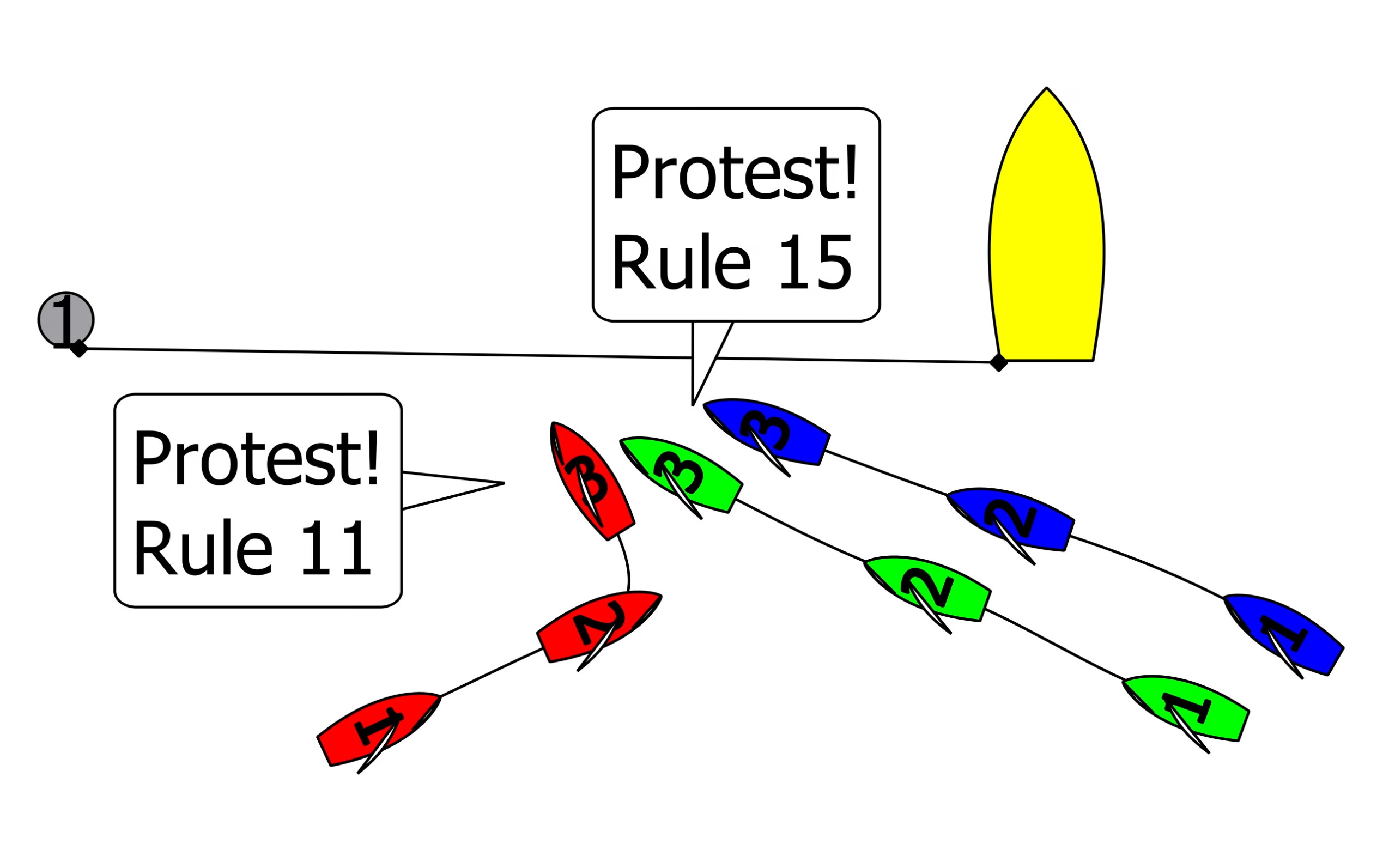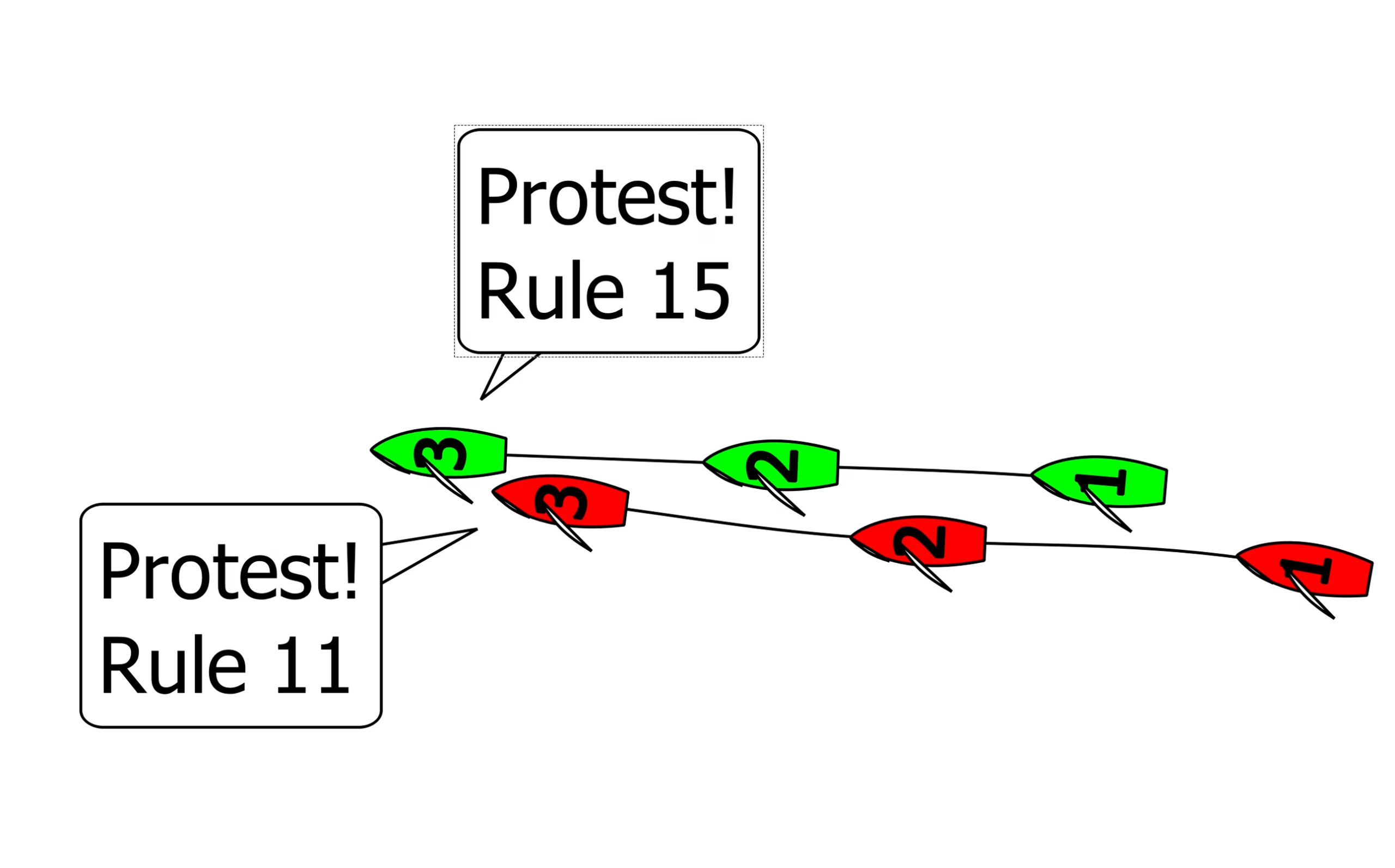Let’s look at what Rule 15 says:
ACQUIRING RIGHT OF WAY
When a boat acquires right of way, she shall initially give the other boat room to keep clear, unless she acquires right of way because of the other boat’s actions.
The purpose of Rule 15 is to ensure fairness and safety when a boat gains the right of way. Without this rule, a boat could suddenly change position and immediately force another boat into a situation where it cannot reasonably avoid a collision. Rule 15 prevents unfair tactics and promotes good seamanship by allowing the other boat a chance to react and maneuver safely.

In example 1, at point 1, we see a potential collision course between Green (on a starboard tack) and Red (on a port tack). Under Rule 10, Red is required to keep clear of Green. At position 3, Green is now the windward boat and needs to keep clear of Red if not to break Rule 11. However, Red breaks Rule 15 because she acquired the right of way and does not give Green room to keep clear.
If there was contact, Green may be exonerated under Rule 43.1.

In example 2, we see a similar situation, where Red is slowly gaining up on Green. At position 1 and 2, Red needs to keep clear of Green under Rule 12 (on the same tack, not overlapped).
At position 3, Rule 11 kicks in (on the same tack, overlapped). Therefore Green, as the windward boat needs to stay clear of Red.
However, Red is so close to Green that if Green was to head up, her stern would swing out and hit Red.
Therefore Red breaks Rule 15 and if there was contact, Green may be exonerated under Rule 43.1.
Rule 15 key points:
- Preventing damage or injury
- Rule 15 trumps right of way.
- Applies oOnly when a boat gains right of way
- Obligation to give room to keep clear
- “Initially” means a brief period
Author
-

Rene is a keelboat instructor and sailing coach in the Mandurah area WA. He is also the author of several books about sailing including "The Book of Maritime Idioms" and "Renaming your boat".
View all posts


